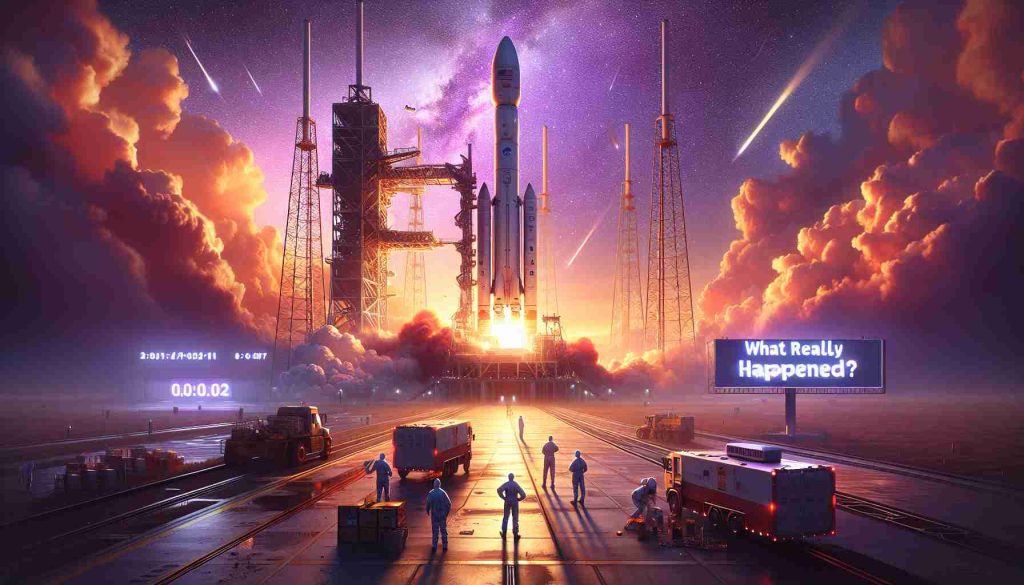The universe is about to set the stage for a magnificent display as six planets move closer together, captivating stargazers around the world. This phenomenon, known as a planetary alignment, is generating excitement among astronomy lovers and casual observers alike.
What Planets Will Be Visible?
The six planets creating this stunning sight are Venus, Mars, Jupiter, Saturn, Neptune, and Uranus. Although they won’t line up perfectly, their clustering in the sky will provide a dramatic spectacle. It’s important to note that these celestial bodies are millions of kilometers apart in the expanse of space, with their alignment influenced by Earth’s position in its orbit. Notably, Mars achieved its “opposition” earlier in January, making it particularly radiant as it sits closest to our planet.
When to Catch the Action?
Mark your calendars for January 21st! The best viewing time will be approximately 45 minutes after sunset, allowing observers three hours to take in this extraordinary alignment before Venus and Saturn vanish below the horizon. For several evenings, stargazers can witness Venus and Saturn in the southwest while Jupiter reigns above and Mars rises in the east.
Visibility in India
This spectacular alignment will be observable across India, contingent on weather conditions. Most cities will have the chance to admire four of the planets with the naked eye, although a telescope will be required to glimpse the fainter Neptune and Uranus. Don’t forget to look up!
The Cosmic Connection: Broader Implications of Planetary Alignments
The upcoming planetary alignment is poised to resonate beyond mere aesthetic enjoyment. Such celestial events have historically ignited wonder and curiosity among civilizations, often leading to advancements in astronomy and navigation. In cultures across the globe, celestial phenomena have been celebrated, influencing mythology, art, and calendar systems, thus deepening humanity’s relationship with the cosmos.
Moreover, the heightened interest in astronomy during events like these can have tangible economic implications. Tourism, particularly astro-tourism, sees a surge as observers flock to prime viewing locations. Local economies benefit from increased traffic to observatories, parks, and hotels. A phenomenon like this can revitalize small communities that are well-placed for stargazing, offering an opportunity for sustainable economic growth.
On an environmental note, there is a growing awareness of the need to preserve dark skies from light pollution, allowing for clearer observations of such alignments. Advocacies for dark-sky initiatives not only cater to astronomers but also foster a collective appreciation for nature and the universe. As we witness the planets line up, it reminds us of our place in the cosmos, prompting discussions about conservation efforts and the preservation of our planet for future generations to enjoy these wonders.
With technological advancements in telescopes and virtual platforms, the educational component can expand, leading to a surge in public interest in science and technology. The alignment isn’t just a celestial event; it’s an invitation to explore our universe—one that has profound implications for society, culture, and environmental stewardship.
Stargazers Rejoice: A Rare Planetary Alignment Awaits!
As the universe gears up for a rare celestial event, astronomy enthusiasts and casual stargazers alike are preparing for an extraordinary spectacle: a planetary alignment featuring six planets. This awe-inspiring occurrence is set to captivate observers across the globe and ignite a renewed interest in the wonders of our solar system.
Understanding Planetary Alignments
A planetary alignment occurs when planets in our solar system appear to gather in a specific area of the night sky as viewed from Earth. Although these planets will not be in a straight line, their clustering will present a visually stunning arrangement. It’s crucial to understand that despite their proximity in our sky, these planets are millions of kilometers apart in space.
Features of the Upcoming Alignment
– Visible Planets: The celestial bodies involved in this unique display include Venus, Mars, Jupiter, Saturn, Neptune, and Uranus.
– Mars’s Opposition: Mars reached its opposition earlier this year, meaning it’s currently at its closest point to Earth, making it particularly bright and easy to spot.
Optimal Viewing Conditions
The best time to witness this spectacular alignment will be on January 21st. Stargazers are advised to look up approximately 45 minutes after sunset. This alignment will last for about three hours, providing ample time for enthusiastic observers to marvel at the display before Venus and Saturn dip below the horizon.
How to View the Planets
1. Observer Location: Find a dark area away from artificial lights to enhance visibility.
2. Timing: The alignment will be best visible during the late evening, around 6:00 PM to 9:00 PM local time.
3. Equipment: While Mars, Venus, Jupiter, and Saturn are bright enough to be seen with the naked eye, Neptune and Uranus will require a telescope for a clear view.
Visibility Across the Globe
This planetary alignment will not just be limited to certain regions. For observers in India, weather permitting, four of these planets will be visible without any special equipment. However, stargazers will need more advanced optics to catch a glimpse of the fainter Neptune and Uranus. This event serves as a perfect opportunity for both seasoned astronomers and those new to stargazing.
The Science Behind Planetary Alignments
Alignments are a result of the planets orbiting the sun at different speeds and distances. As they navigate their orbits, they sometimes appear to cluster together from our perspective on Earth. While these events are relatively rare, this particular alignment not only features a significant number of planets but also occurs after Mars’s recent opposition, adding to its spectacular nature.
Innovations in Stargazing
With advancements in technology, stargazing has become more accessible than ever. Mobile apps allow users to track celestial events, helping astronomy enthusiasts pinpoint the best viewing times and locate planets in the night sky. These apps often include augmented reality features, making it easier to identify celestial bodies for those who may be new to astronomy.
Insights and Predictions
Such planetary alignments typically spark increased interest in astronomy and can lead to more educational events and community star-gazing gatherings. As people come together to witness this awe-inspiring phenomenon, we can expect a boost in local astronomy clubs and online forums where enthusiasts can share their experiences, photos, and insights.
In summary, this upcoming planetary alignment not only promises a stunning visual display but also serves as a reminder of the beauty and complexity of our universe. Keep your telescopes ready and your calendars marked for January 21st to experience this magnificent celestial event!
For more astronomy news and updates, visit NASA.

















